Where Is Cork From?
Cork is the outer bark of the Cork Oak Tree (Quercus suber in Latin) which grows in the mountain area of at least eight provinces of China and Mediterranean region. The reason for this is due to the climate and types of soil produced within these areas. The tree is distinguished by the great thickness and sponginess of its bark. There are a few different types of cork trees. However, these cork trees produce a bark which is unusable for cork production. The cork used for wine-stoppers and for the production of cork flooring comes exclusively from the bark of the Cork Oak Tree.
Cork is the outer bark of the Cork Oak Tree (Quercus suber in Latin) which grows in the mountain area of at least eight provinces of China and Mediterranean region. The reason for this is due to the climate and types of soil produced within these areas. The tree is distinguished by the great thickness and sponginess of its bark. There are a few different types of cork trees. However, these cork trees produce a bark which is unusable for cork production. The cork used for wine-stoppers and for the production of cork flooring comes exclusively from the bark of the Cork Oak Tree.
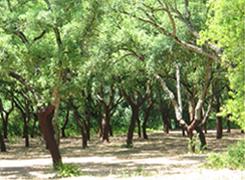
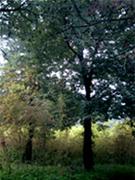
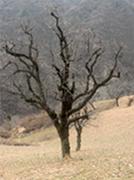
Cork Harvest
The outer bark falls off itself if let alone, but for commercial purposes it is stripped off when judged sufficiently matured, this being when the tree has reached the age of from fifteen to thirty years. In the course of ten years more or less, the same tree will yield another supply of cork of better quality, and the removal of this outer bark is said to be beneficial, the stripped trees thus reaching the age of 150 years or more.
The bark is removed by a kind of ax, parallel cuts being carried around the tree transversely and united by others in a longitudinal direction, so as to produce oblong sheets of bark. Care must be taken not to cut into the inner bark, or the tree would be killed. The pieces of cork are flattened out by heat or by weights, and are slightly charred on the surface to close the pores.
The outer bark falls off itself if let alone, but for commercial purposes it is stripped off when judged sufficiently matured, this being when the tree has reached the age of from fifteen to thirty years. In the course of ten years more or less, the same tree will yield another supply of cork of better quality, and the removal of this outer bark is said to be beneficial, the stripped trees thus reaching the age of 150 years or more.
The bark is removed by a kind of ax, parallel cuts being carried around the tree transversely and united by others in a longitudinal direction, so as to produce oblong sheets of bark. Care must be taken not to cut into the inner bark, or the tree would be killed. The pieces of cork are flattened out by heat or by weights, and are slightly charred on the surface to close the pores.
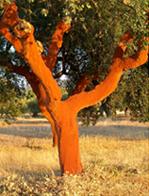
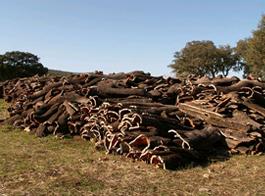
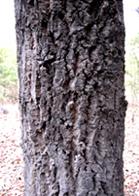
What Are The Benefits Of Cork?
Cork is nature's nearly perfect product which is 100% natural, recyclable and reusable, essential qualities in a more environmentally friendly and less polluted modern society.
Cork Oak Trees produce Suberin, a waxy substance which adds to the versatility and functionality of the cork, making it a valuable investment. The Suberin possesses qualities allowing it to resist rotting caused by moisture, mildew, mold, and insect infestation.
Cork is of light weight honeycomb structure and flexible membrane. For example, Cork Wall Tiles have something like two hundred million air cells per square inch and sixty percent of that is purely air. It seems a cushion of air, and absorbs sounds, atmosphere and noises created by equipment like direct impacts.
There are numerous properties that cork has such as below.
• Light in weight (Buoyant) • Soft • Warm • Quiet
• Resilient • Compressible Durable • Well Frictional
• Low conductor of sound and heat
• Resistant to the passage of moisture and liquids
• Absorbs sounds and vibration
• Rot resistant
• Fire resistant in its natural state
Cork is nature's nearly perfect product which is 100% natural, recyclable and reusable, essential qualities in a more environmentally friendly and less polluted modern society.
Cork Oak Trees produce Suberin, a waxy substance which adds to the versatility and functionality of the cork, making it a valuable investment. The Suberin possesses qualities allowing it to resist rotting caused by moisture, mildew, mold, and insect infestation.
Cork is of light weight honeycomb structure and flexible membrane. For example, Cork Wall Tiles have something like two hundred million air cells per square inch and sixty percent of that is purely air. It seems a cushion of air, and absorbs sounds, atmosphere and noises created by equipment like direct impacts.
There are numerous properties that cork has such as below.
• Light in weight (Buoyant) • Soft • Warm • Quiet
• Resilient • Compressible Durable • Well Frictional
• Low conductor of sound and heat
• Resistant to the passage of moisture and liquids
• Absorbs sounds and vibration
• Rot resistant
• Fire resistant in its natural state
Use Of Cork
A great variety of products are manufactured from cork. Sometimes the natural cork is utilized; in other cases composition cork is used, made of coarse or finely ground pieces treated with adhesives and molded. The two most predominant uses of cork are cork wine stopper and cork flooring.
Articles that have been made from natural cork include bottle stoppers, hats and helmets for use in tropical areas, tips for cigarettes, carburetor floats, handles for golf clubs, penholders, fishing rods, mooring buoys, floats, life preservers, life jackets, surf balls, baseball centers, decoys, mats, tiles, etc.
Composition cork is used for the lining of crown caps, the metal tops for sealing bottles, gaskets, and innersoles for shoes, polishing wheels, friction rolls, and several types of floor covering. Linoleum is made from cork or wood flour, linseed oil, resins, such as rosin or kauri gum, pigments, and burlap.
Each day cork is expanding its applications on the planet. LEECORK is proud of being an eyewitness of cork's modern applications!
A great variety of products are manufactured from cork. Sometimes the natural cork is utilized; in other cases composition cork is used, made of coarse or finely ground pieces treated with adhesives and molded. The two most predominant uses of cork are cork wine stopper and cork flooring.
Articles that have been made from natural cork include bottle stoppers, hats and helmets for use in tropical areas, tips for cigarettes, carburetor floats, handles for golf clubs, penholders, fishing rods, mooring buoys, floats, life preservers, life jackets, surf balls, baseball centers, decoys, mats, tiles, etc.
Composition cork is used for the lining of crown caps, the metal tops for sealing bottles, gaskets, and innersoles for shoes, polishing wheels, friction rolls, and several types of floor covering. Linoleum is made from cork or wood flour, linseed oil, resins, such as rosin or kauri gum, pigments, and burlap.
Each day cork is expanding its applications on the planet. LEECORK is proud of being an eyewitness of cork's modern applications!